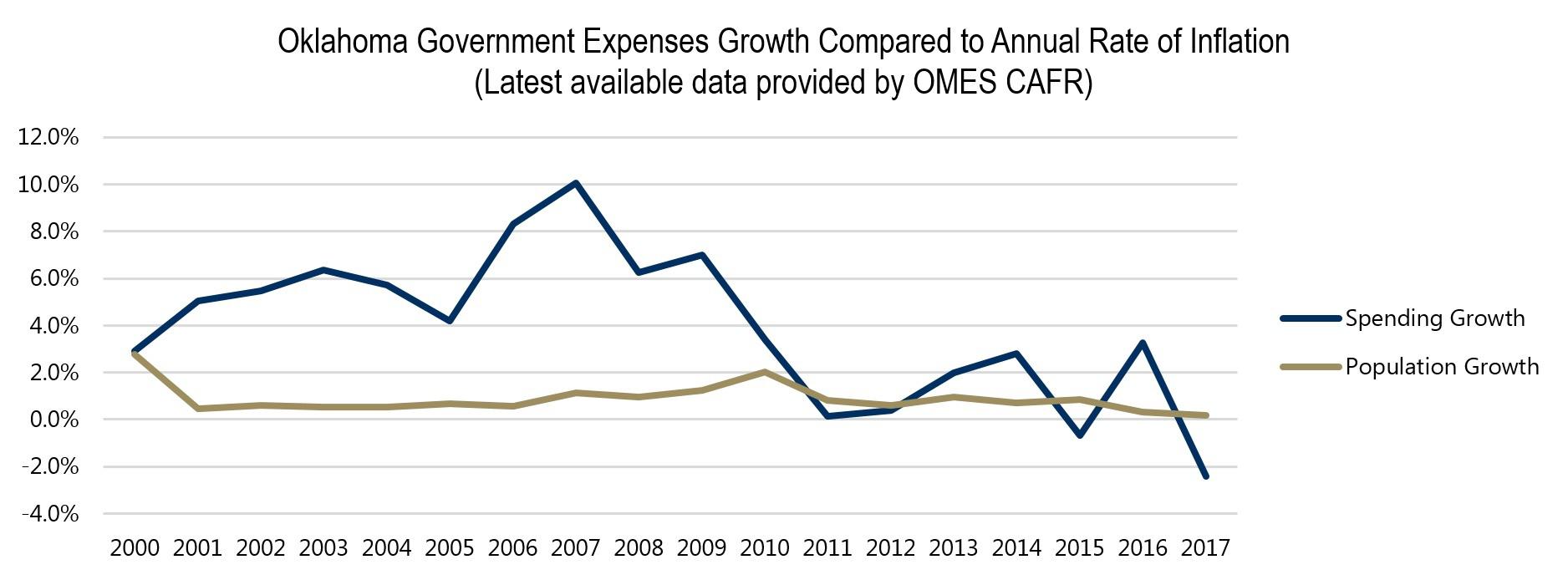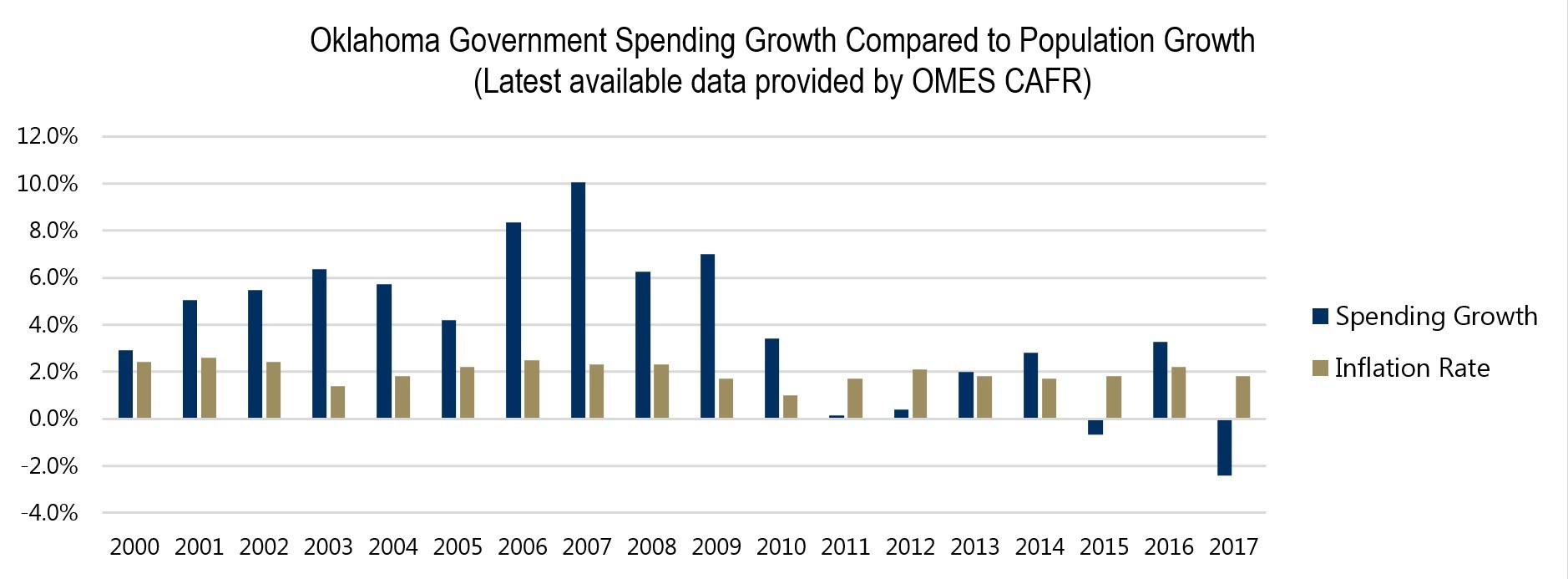
Budget & Tax
State spending growth vs. population growth and rate of inflation
May 16, 2018
Curtis Shelton
Note: This originally ran on September 27, 2017. It has been updated with new data.
Spending has grown substantially over the last two decades. That is a simple fact, but it’s reasonable to ask how growth compares to changes in population or the economy. Let’s take a look.

It is true that since 2000 Oklahoma’s population has increased 14%. But in that same interval, government spending has grown a whopping 92%. While the population has grown around 1% annually, government spending has grown four times that fast. To put it another way, in those 18 years state spending has gone from $2,649 per person to $4,459 per person.

Rising costs can’t be to blame for the high growth rate in government spending either. Spending has mostly outstripped the rate of inflation since 2000. Even before the financial crisis when inflation exceeded 2%, spending was growing twice as fast. As Oklahoma entered two economic recessions—in 2008 and 2015—spending growth slowed to under 4%, but inflation decreased as well.
Also, it’s worth noting that inflation estimates are always only averages based on assumptions. “Measuring inflation is something of a black art,” writes a former banker, while an economist writing for CBS MoneyWatch counsels that “there is no single answer to the question of which measure of inflation is best.” The value of a dollar also varies both at any given time and over time between different parts of the country, which adds to the complexity.
Finally, while Oklahoma working families and businesses are constantly challenged to innovate and use technology to replace activity formerly performed by large workforces, government, by in large, avoids this reality.